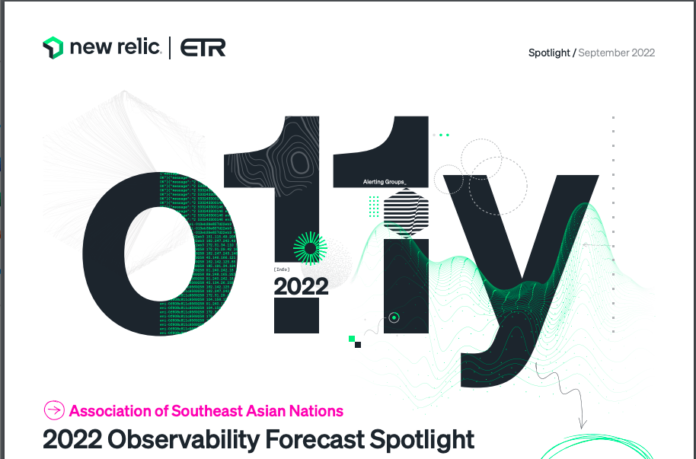Nearly three-quarters of technology professionals in the Association of Southeast Asian Nations (ASEAN) region said C-suite executives in their organisations are advocates of observability, and more than three-quarters (83%) saw observability as a key enabler for achieving core business goals, implying that observability has become a board-level imperative.
These are from findings of the 2022 Observability Forecast report, for which New Relic and research firm ETR surveyed in March and April 1,614 technology professionals in 14 countries including ASEAN members Singapore, Malaysia, Indonesia and Thailand.
The others include the United States, Germany, France, the United Kingdom, Canada, India, Japan, Australia, Ireland, and New Zealand.
Of the respondents, 65% were practitioners (developers and engineers) and 35% were information technology decision-makers (C-suite executives and non-executive managers).
Among respondents in ASEAN, 43% said they apply observability — the ability to measure a system’s current state based on the data it generates — to support digital transformation efforts to improve and gain a competitive advantage from the digital customer experience.
According to the research, ASEAN organisations today monitor their technology stacks with a patchwork of tools. At the same time, respondents surveyed in ASEAN indicated they longed for simplicity, integration, seamlessness, and more efficient ways to complete high-value projects.
Moreover, as ASEAN organisations race to embrace technologies like blockchain, edge computing, and 5G to deliver optimal customer experiences, observability supports more manageable deployment to help drive innovation, uptime, and reliability.
The study found that only 35% had achieved full-stack observability by the report’s definition — the ability to see everything in the tech stack that could affect the customer experience. Just 7% had a mature observability practice by the report’s definition.
Over a third (39%) said they still primarily detect outages manually or from complaints, and most (83%) used four or more tools to monitor the health of their systems.
Almost half (46%) said they experience high-business-impact outages once per week or more, and 39% said they take more than an hour to resolve those outages.
Just 3% said their telemetry data is entirely unified (in one place), and only 17% said the visualisation or dashboarding of that data is entirely unified.
More than half (59%) said they prefer a single, consolidated observability platform.
Respondents surveyed in ASEAN predicted their organisations will most need observability for the Internet of Things (IoT), artificial intelligence (AI) and 5G in the next three years.
The research implies that the ideal state of observability is one where engineering teams monitor the entire tech stack in all stages of the software development lifecycle, employ mature observability practice characteristics, and have unified telemetry data and a unified dashboard or visualisation of that data — ideally in a single, consolidated platform.
More than half of respondents surveyed in ASEAN said they prefer a single, consolidated observability platform, yet only 2% used one tool for observability.
They said some of the main challenges preventing them from prioritising/achieving full-stack observability are a lack of strategy and understanding of the benefits, too many monitoring tools, and un-instrumented systems.
















